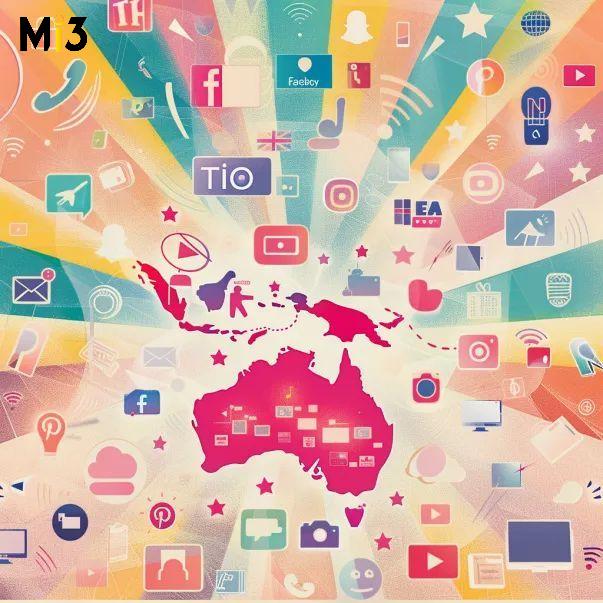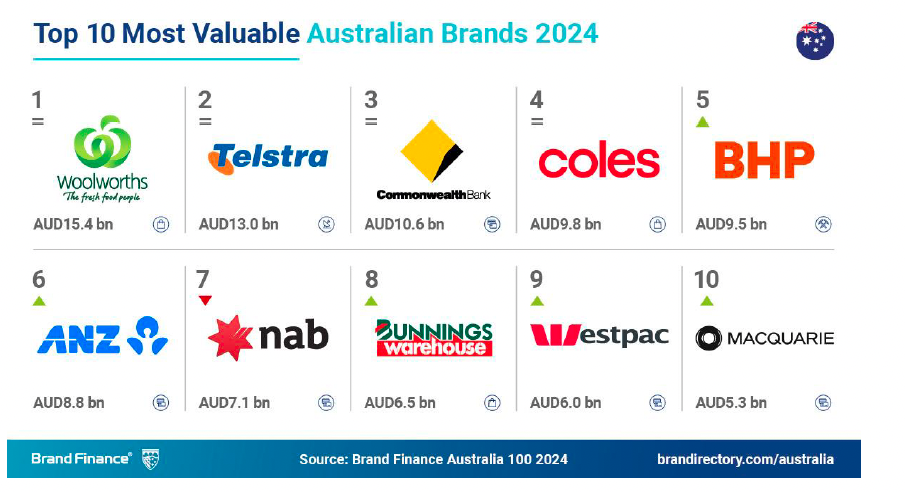‘Angry religious fights’: Salesforce global President and CMO Ariel Kelman on re-engineering attribution from last touch to ‘deep learning’ model; why B2B market will follow and an AI-powered rebound is coming

What you need to know:
- One year after returning to Salesforce, President & CMO Ariel Kelman has overhauled metrics, attribution and KPIs.
- Attribution is now a “deep learning model” that he says is where the broader B2B market is likewise headed.
- It means the company can better weight marketing’s contribution to pipeline and revenue growth.
- That means marketers have a clearer idea of how they can hit those new KPIs – and keep business incoming.
- Which Salesforce’s is acutely conscious of, given the share price tumbled 20 per cent last week after it missed revenue guidance for the first time in circa 20 years.
- Ironically, most analysts from Goldman Sachs to Bank of America still have a buy rating on Salesforce, caveating their share price punishment on expectations Salesforce will bounce back with a strong AI push across its suite of cloud products and indications that its new business pipeline remains “very healthy”.
- Which is perhaps why the stock has already started bouncing back.
- Kelman points to major gains from its new AI products for the likes of Gucci, Sonos and Turtle Bay Resort, which Blackstone last week unloaded for a $400m-plus profit after soaring revenues and massive conversion rate gains.
- Turtle Bay’s approach is now filtering through the private equity giant’s broader hospitality portfolio – which in Australia includes Crown Casinos.
- Meanwhile Kelman, speaking with Mi3 at Salesforce’s Chicago marketing and commerce Connections summit, sees competitive advantage in AI that is plugged-in deeply to metadata across different business silos.
- It means, for example, it can flag any “hot customer service issues” with a client before an unwelcome marketing email is unwittingly fired off.
- That’s a little more useful than “some rando copilot on the side that may or may not be trained in the right way on your data”, he suggests.
- Get the full download via the podcast.
A year ago Ariel Kelman returned to Salesforce after a decade running global marketing for the likes of Amazon Web Services and Oracle. As global President and CMO of the $200bn-plus customer tech giant, he’s wasted little time shaking things up – and Kelman’s view that Salesforce had “lost our focus on sales pipeline and on marketing really being a vehicle for driving business results” now appears prescient. Last week Salesforce’s stock price crashed circa 20 per cent after missing revenue guidance for the first time in two decades. Ironically, most analysts still have a ‘buy rating’ on the stock – citing a “very healthy” pipeline and backing its new AI tools to power renewed growth.
Kelman has driven a forensic effort unpacking marketing’s contribution to sales – from a brand investment perspective and more tactical, performance-based campaigns. He’s also reset KPIs and marketing metrics and re-engineered the firm’s attribution model – not for the fainthearted, given “you can provoke very angry religious fights” amongst attribution’s fractured tribes. Either way, Salesforce has ditched last touch for a “deep learning” model that blends and weights sales’ and marketing’s contribution to pipeline growth and revenue. Kelman thinks the rest of the B2B market will ultimately take the same approach.
Speaking with Mi3 at Salesforce’s Chicago marketing and commerce Connections summit, Kelman said the company’s new AI tools are already making waves both internally and externally – the likes of Blackstone private equity-owned Turtle Bay Resort in Hawaii was the summit’s poster child for riding that big wave.
Meanwhile, as of this week, Salesforce’s share price seems to be in recovery.
I came into a large, complicated organisation where we had a lot of great people doing a lot of great things. But I think we [had] lost our focus on sales pipeline, and on marketing really being a vehicle for driving business results as, if I use a Star Trek analogy, the prime directive.
Make it so
After eight years with AWS and two and a half at Oracle, Kelman is one of Salesforce’s posse of top executive boomerangs who have returned to the company in the past 12 months. After more than a decade away from the customer tech behemoth, what had changed?
“I came into a large, complicated organisation where we had a lot of great people doing a lot of great things. But I think we [had] lost our focus on sales pipeline, and on marketing really being a vehicle for driving business results as, if I use a Star Trek analogy, the prime directive,” says Kelman.
So he set about refocusing.
“Really nailing a new generation of marketing metrics was the most important thing for me to ground us on. We hadn’t invested in an attribution model to measure the impact of marketing on our business in a while, and you’ve got to refresh these things,” says Kelman.”So we did some data science work and re-goaled everyone – that was one of the big things – around marketing-driven pipeline for our salespeople. And I’ve spent a lot of time evolving the organisation so we can have stronger ownership of different areas of our business.”
I could talk about this for a long time and you can provoke very angry religious fights talking about attribution.
Attribution overhaul
Rebuilding an attribution model is fraught with difficulty. Hence so many businesses remaining rusted-on to last click, despite its obvious flaws.
“Yeah… I could talk about this for a long time and you can provoke very angry religious fights talking about attribution,” Kelman acknowledges.
“This is where I’m kind of jealous of my colleagues who have worked at B2C companies, where you can launch a campaign and then see an actual financial ROI later that day. But in B2B marketing, you have multiple decision makers, you have multiple campaigns, long sales cycles, multiple sales engagements…”
Hence opting for a “deep learning model” that Kelman thinks the “world of B2B is [likewise] coalescing on.”
It works by “basically assigning weights to different programs”, to divide up and apportion appropriate credit.
“Let’s say it’s for pipeline generation for a million dollars of sales pipeline. If that customer was touched by let’s say 15 marketing programs and 20 touches by a salesperson during that period of time, how much of that pipeline do you associate as being caused by those programs? You’re doing that essentially by figuring out the correlation of looking at past history of how good or how impactful are those programs. And this is what deep learning models are really, really good at. This was maybe experimental or cutting edge six years ago or so. But now as I talk to CMOs, other large B2B companies, it’s becoming kind of a common approach,” says Kelman.
“So it’s measuring how much incremental sales pipeline we should attribute to a specific marketing campaign. And the deep learning model isn’t training on the sequence – so the last touch, the first touch, the middle touch, those are all touches,” says Kelman, who sees most attribution models as inherently flawed.
“The huge problem with last touch attribution, is that it kind of ignores the things you actually spend money on, which is usually the first touch – the source of traffic. But of course, that’s not the full funnel approach. Just because you get someone to your website doesn’t mean that’s the whole game,” he says, because then you have to convert them – and in B2B that’s often a long and convoluted process rarely involving an individual decision-maker. “So I try and take the sequencing out. If you want to measure how good things are [at] converting on your website, I like to go and test and tune those all separately from the attribution model.”
I'm not a fan of trying to do full funnel measurement where you're trying to measure the incremental revenue impact of a brand advertising campaigns. I think in most cases, it's pretty delusional in a B2B context. B2C, there's some good things that you can do, but B2B, it's just too far removed from the transaction.
Brand-demand-sales
The attribution re-tool was also key to resetting marketing KPIs – two sides of the same coin, says Kelman. The old model, a “30-day attribution window last touch type of thing”, wasn’t properly capturing marketing’s impact. With the new model in place, the new KPI is “just being clear that the number one goal for most of the marketing teams is around incremental contribution of pipeline”, says Kelman. Plus, there are now better models in place to show how marketing is contributing to helping sales advance and close open deals – and ultimately what each marketing program is bringing to the bottom line.
On the brand-side, it’s mostly “survey-based measurement on lifting awareness and perception”, says Kelman. But he says that has limitations in terms of gauging top-line growth effects.
“I’m not a fan of trying to do full funnel measurement where you’re trying to measure the incremental revenue impact of a brand advertising campaigns. I think in most cases, it’s pretty delusional in a B2B context. B2C, there’s some good things that you can do, but B2B, it’s just too far removed from the transaction. So what I’ve tried to do is to have the team focus on, is the brand messaging effective at changing people’s perceptions? And then are we doing it as efficiently as possible of getting reach into the people that we want to have hear our message or see it?”
Kelman thinks the ‘double duty’ argument – that brand can also deliver performance outcomes if properly executed with both goals in mind – holds water, with some success of driving both perception gains and sign-ups taking that approach at AWS. But he says sales impact is a “secondary effect … and I’ve never had it be very large”.
The percentage of Salesforce’s marketing budget spent on brand advertising is “pretty low”, because it largely knows its customers and is usually up- or cross-selling to them.
“A loose rule of thumb for a B2B tech company is that your brand advertising spend is inversely correlated to how well you know who you’re selling to,” says Kelman. “If you’re selling to small businesses, like an Intuit [selling] TurboTax, half of them didn’t exist six months ago. So they have to do brand advertising, whereas a lot of our business goes to large enterprises, where we’re selling them new products, we already know who they are – so we can be more efficient in how we reach them with earned and owned channels.”
When it comes to performance marketing, he says that investment should be funded based on “gates and thresholds and not some pre-determined budget”.
It's a fool's errand to try and orchestrate some hypothesis you have of this complicated journey between different people in the company. It's just too complicated. I like to like to dumb it down to say, there's different types of people who need to be educated on what your products do … why they're different. And you just need to answer those questions and make it easy for them to find the information. They'll talk to each other.
Resist over-complication
There’s a view that B2B marketers have for years been focused on the wrong thing – lead generation – which by its nature only captures a fragment of demand when buyers have largely made up their mind, and which misses many of the decision-makers in that buying decision.
Kelman agrees that the number of parties involved in the buy has increased, necessitating expansion of the different routes and content to reach and engage them, and of the ‘personas’ B2B marketing teams build to model those efforts upon. But he thinks that can be taken to extremes for little gain.
“What I think is a fool’s errand is to try and orchestrate some hypothesis you have of this complicated journey between different people in the company. It’s just too complicated. I like to like to dumb it down to say, there’s different types of people who need to be educated on what your products do, what they should use them for, how they can be successful, why they’re different. And you just need to answer all those questions and make it easy for them to find the information. They’ll talk to each other.”
[Sonos is] deflecting 40 per cent of the calls that would normally have gone to the customer service reps [using chat bots].
AI accelerator
Featured in the likes of The Hunger Games and Pirates of the Caribbean, Turtle Bay Resort took on almost everything in the Salesforce suite along with its Einstein AI co-pilot and has seen revenues lift 40 per cent and conversions up 20 per cent in the past year. Which probably helped pump Blackstone’s returns when selling the Hawaiian resort last week for a cool $768m – $436m more than it paid in 2018. Turtle Bay’s findings are already finding their way through to Blackstone’s broader hospitality assets – which include Australia’s Crown Casinos.
While Turtle Bay Resort CMO Robert Marusi was the poster child for Salesforce’s all-in AI push at the Connected event, Kelman cited other major AI gains for the likes of Gucci and Sonos, the latter crushing call volumes handled by customer service staff as a result.
“Turtle Bay is on the early end of adoption and they’re really taking advantage of our platform, but it’s all really new … and we are seeing customers jump at this,” says Kelman.
He says Gucci is using the AI to respond more quickly to customer questions, but at the same time have their responses “Guccified” to maintain brand consistency. He said it is saving them “80 per cent of the time” and de-loading call centre operatives in an industry where churn is a challenge. “So that is a big advantage for them using this.”
While Gucci is using the AI platform to make personalised responses more effective and efficient, Sonos is using it to reduce the number of calls its operators have to take in the first place – with the Einstein chat bot “deflecting 40 per cent of the calls that would normally have gone to the customer service reps”, per Kelman.
The bigger differentiator for us is the deep integration with both the data and metadata and then also the user experience. So this AI is right in the flow of work, and it knows about the rest of our products. So if you're clicking on reply to a customer email, it knows that you may be trying to sell the customer something, it knows that if they have a really hot customer service issue, you may not actually want to send them the marketing email at all.
Avoiding ‘rando’ AIs
Salesforce’s marketing team is likewise making major time savings from using its own tools.
“One of the biggest benefits for our business is helping us deal with the problem we have – that’s not uncommon for marketers – which is that we’re being asked to do about 10 times more than we have time to do,” says Kelman.
“So in content creation, we’re using generative AI to take the first pass and also to create variations of what we write to create blog posts, and to adapt that for social media and to break this up into five different tweets. That that’s been effective. Having AI generate the first pass of some of the email marketing campaigns has saved us a lot of time. Also using Einstein conversation insights, which records our sales people’s phone calls and transcripts them and lets us do AI on them, we’re able to learn how effective some of our messaging is going to be … and that has been really useful for us.”
Salesforce early on issued a diktat that no customer data was to be put into prompts of its large language models, and Kelman thinks the company is currently benefitting from that approach as corporates weigh AI rewards against some as yet unknown risks.
“I think the trust aspect of it is a huge competitive differentiator for us now, but long-term, it’s table stakes,” he says.
“I think the bigger differentiator for us that customers are seeing is the deep integration with both the data and metadata and then also the user experience. So this AI is right in the flow of work, and it knows about the rest of our products. So if you’re clicking on reply to a customer email, it knows that you may be trying to sell the customer something, it knows that if they have a really hot customer service issue, you may not actually want to send them the marketing email at all,” he adds.
“You have that opportunity because you understand the data, the metadata, to really provide a deeper level of AI that’s easier, that’s more likely to give you a useful result than if you have some rando co-pilot on the side that may or may not be trained in the right way on your data.”
Get the full download via the podcast.





